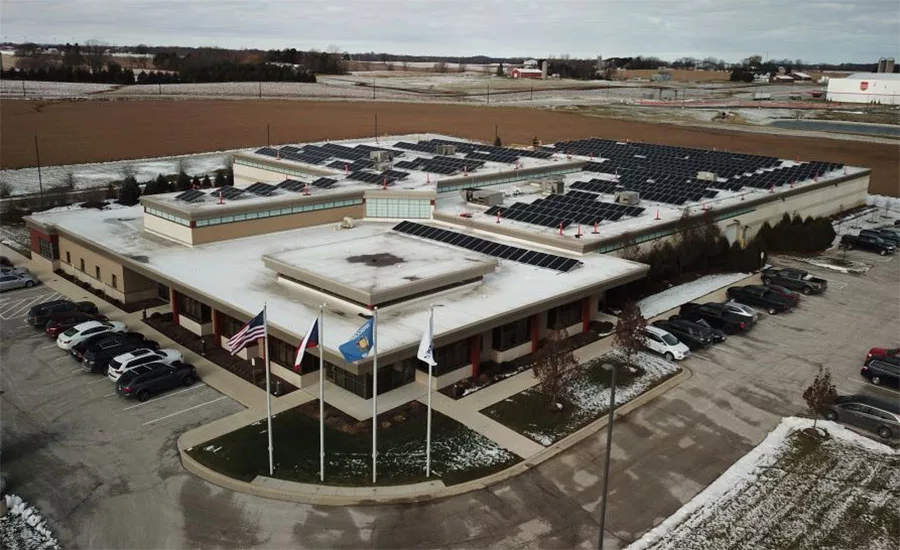Energy savings
Packaging machine company turns toward the sun
Solar power helps Viking Masek save some big bucks

Viking Masek packaging machine company decided to make the best of its rooftop and installed a solar array, which contributes almost 240 kW to both the company’s and community’s energy needs. Source: Viking Masek
Did you ever wonder what to do with all the space your roof occupies? Chances are, there’s a lot of empty space up there that could be put to better use than reflecting the sun—assuming you used a white surface to reflect the heat back into the sky, rather than absorbing the heat and adding cooling to compensate.
Why not put a photovoltaic (PV) array up there and make some electricity? Not only could you use it for cooling and lighting, you could also use it to run equipment, and if there’s any power left over, sell it back to the electric company. But, you say it’s not practical because you’re in a northern climate.
Well, Viking Masek, needed a little convincing, too. Its northern location—about 20 to 30 miles north of Milwaukee on the shore of Lake Michigan—is not what you’d expect as a great location to absorb the sun’s rays, certainly not like southern California, Nevada, Arizona or Florida.
Viking Masek makes all kinds of packaging machines for the food and beverage and pharmaceutical industries, including pouch, vertical form-fill-seal, stick packaging and sachet machines. Any help in reducing energy costs in the plant is a big deal, but at what cost?
Arch Electric, a Wisconsin-based solar energy company, had approached the Viking Masek leadership in early 2018 to make the case for a roof-mounted solar PV system. With testing and feasibility studies, Viking Masek realized an investment in solar would be beneficial—for the community, the environment and for the bottom line.
After signing contracts in August 2019, installation of the rooftop array began. By December 2019, the system was connected to the plant’s power system and turned on. It generates up to 239.76 kW with 648 solar panels, saving enough electricity each year to power 28 homes.
Why do solar? “An investment in modern solar power was a decision we collaboratively chose to pursue to fulfill our energy needs here at Viking,” says Viking Masek Executive Vice-President Robb Leonhard. “There will be many days when Viking will produce more energy than we utilize and this energy goes to the grid. This is a win-win for everyone.”
Government programs and initiatives helped make the solar array more affordable by offsetting some of the project costs. Thanks to a Focus on Energy RECIP grant, funding through the USDA Rural Energy for America Program (REAP), and tax incentives, Viking’s out-of-pocket costs for the solar array were substantially reduced, shortening the return on investment period considerably.
What about ROI? Viking expects the solar array to fully pay for itself in two to three years. While mileage will be different depending on the type of facility you operate, a little help from the sun could help offset your energy costs.
Looking for a reprint of this article?
From high-res PDFs to custom plaques, order your copy today!








